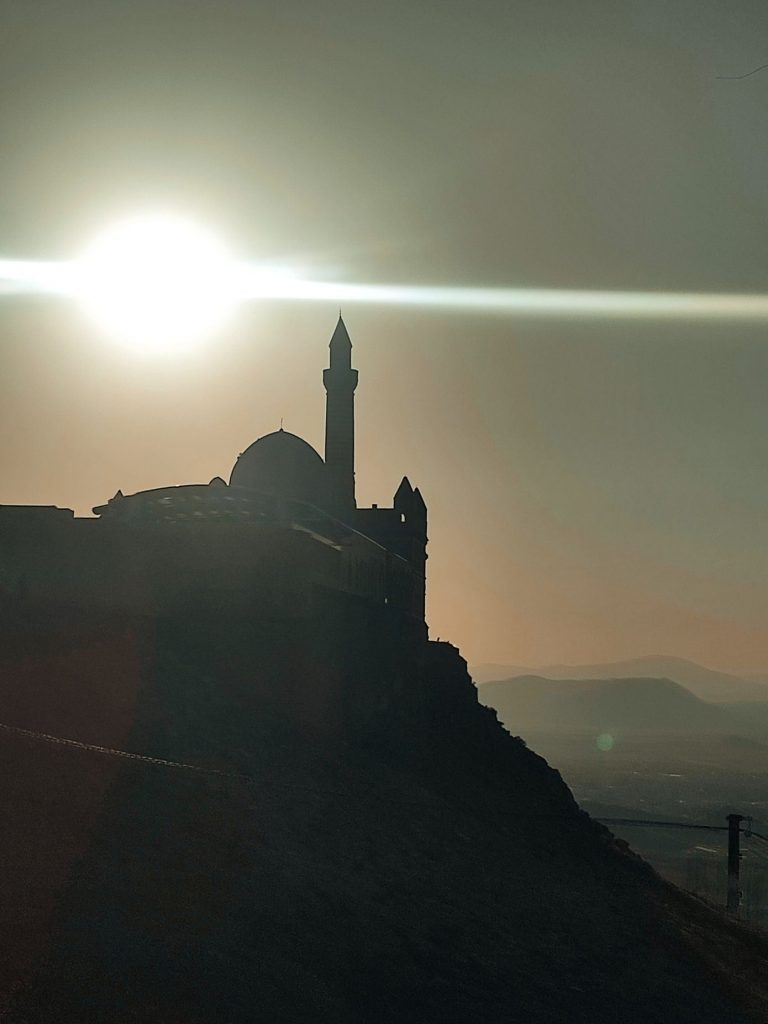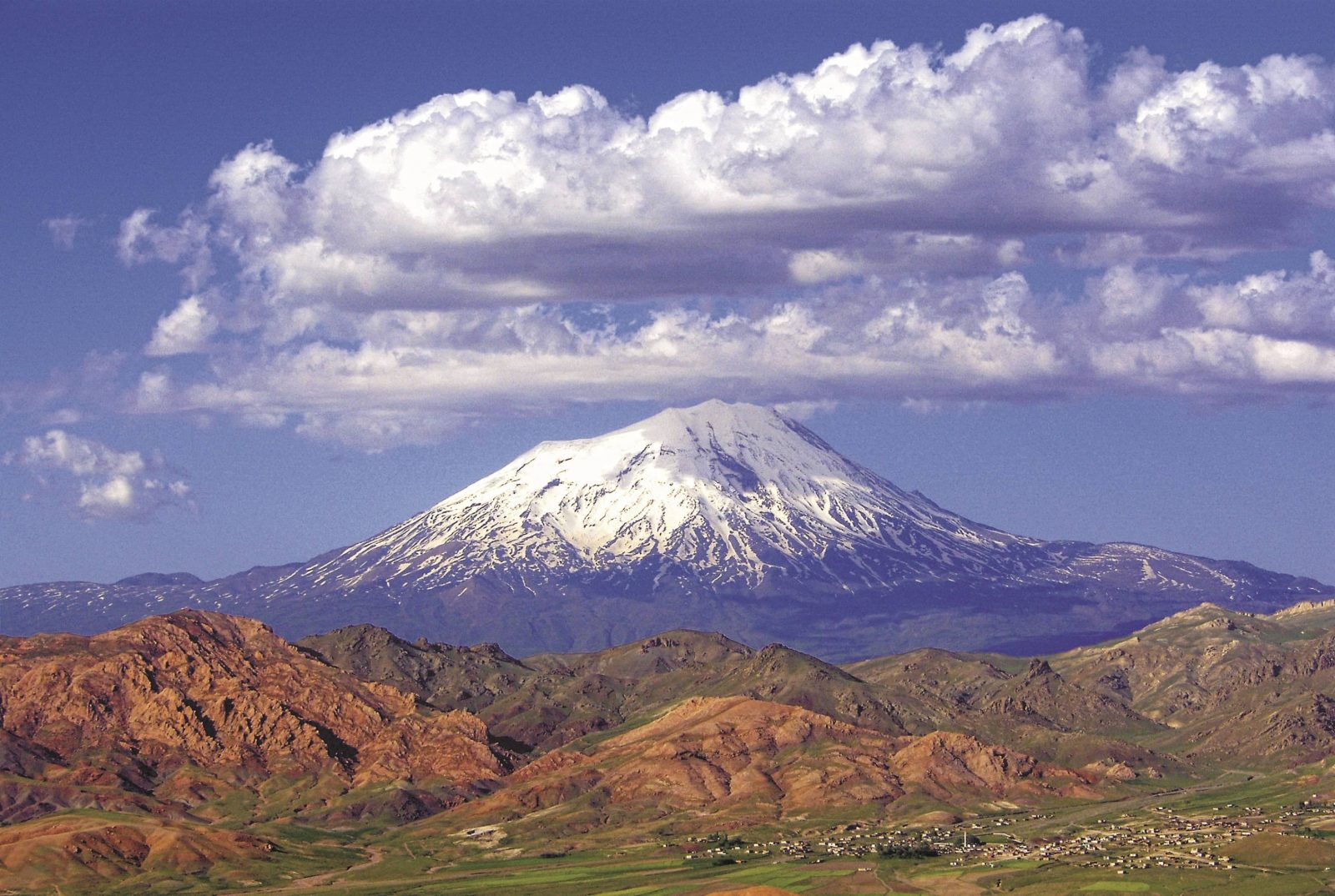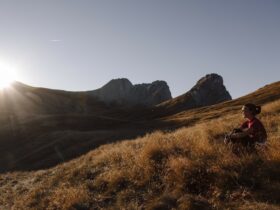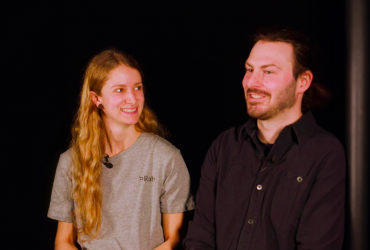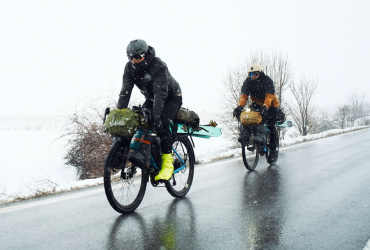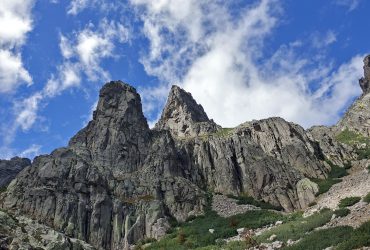On the edge of Turkey stands a mountain more than 300 metres higher than Mont Blanc. Welcome to Mount Ararat, 5,137 metres above sea level. We Rock Sport recently went there to discover this dormant volcano during a hike to the first base camp.
"Look over there, that's Iran in front of you. Back there, about twenty kilometers away, you come across the Armenian border. And at the same distance to the south is Nakhchivan, an autonomous republic of Azerbaijan". In an instant, the words of the guide accompanying us on this hike to Mount Ararat give us a better grasp of the space and specific situation of Turkey's highest peak. Here, at an altitude of 3,200 metres, at the first base camp (a second has been set up at 4,000 metres), history can be contemplated through the eyes of a mountain that has always aroused the religious beliefs and covetousness of the region's dominant peoples. Romans, Persians, Arabs, Ottomans, Russians, Turks... At an altitude of 5,137 metres, the flag has often changed color, and even today, the mountain's name is a matter of debate.
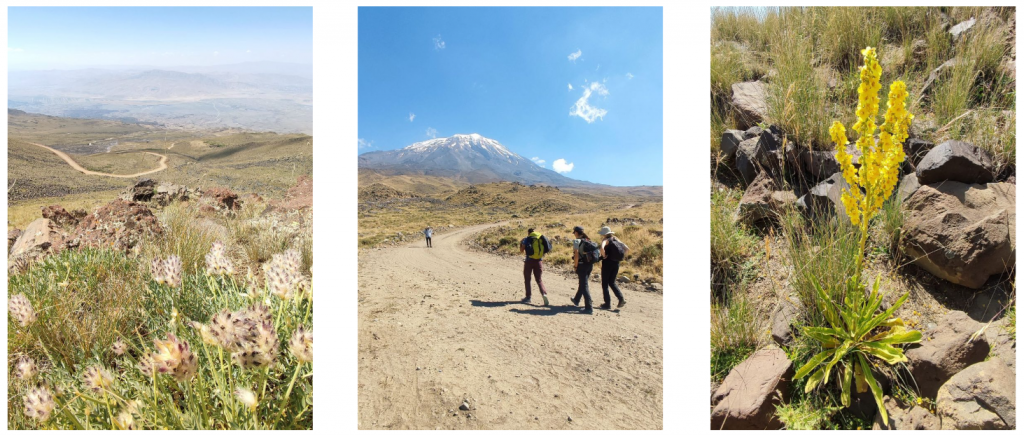
While it is commonly referred to as Ararat by a large part of the international community and local residents, the term Mount Agri (named after the mountain's province) is preferred by the Turkish government. This ancient volcano, formed over the years by the accumulation of lava flows and projections, is at the heart of a small massif 23 kilometers long and 18 kilometers wide. The geology of the mountain means that it can be admired perfectly from over 100 km away. Mount Ararat lies between the border provinces of Ağrı and Iğdır, which are predominantly populated by Kurds and Azeris. It was first climbed in 1958 by Baden doctor and explorer Friedrich Parrot.
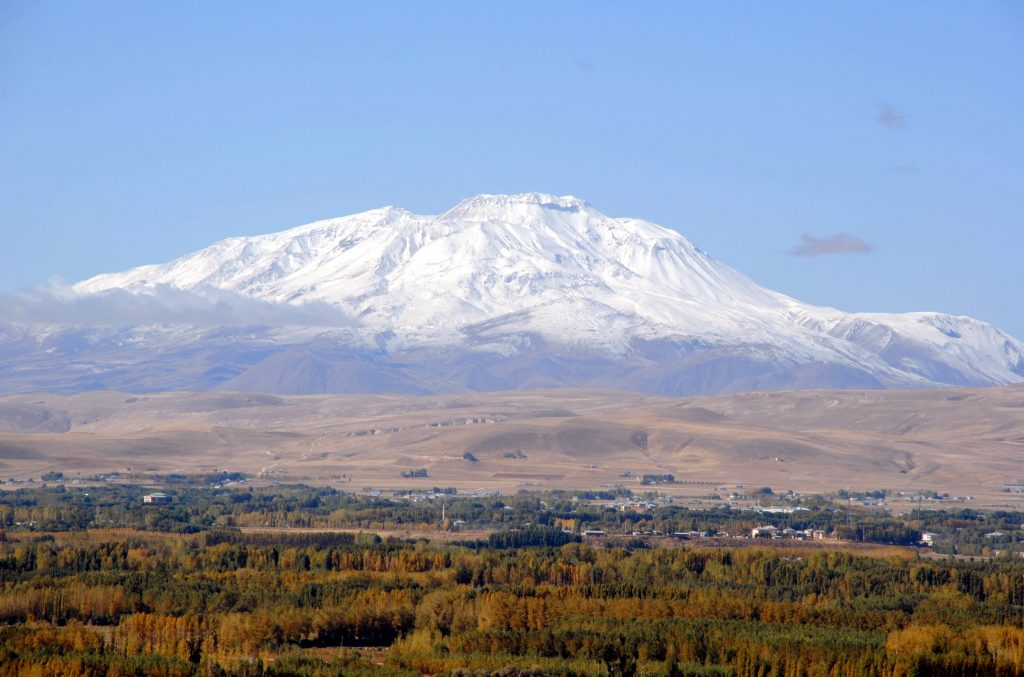
To reach Mount Ararat, first take a domestic flight from Istanbul to Agri. Then by road, an interminable straight stretch of almost 120 km brings you closer to your goal. In August, arid landscapes flash before your eyes. Villages are few and far between on these immense steppes, but shepherds and their flocks are regularly spotted. Often, they're just men, with no homes to speak of. Here, there are no fences or barbed wire to keep cows and sheep. The animals are free to roam these thousands of hectares in Turkey's far east. Sitting on a stone, most of the shepherds seem to be there for eternity, content to follow the movement of the animals according to their desire and hunger.
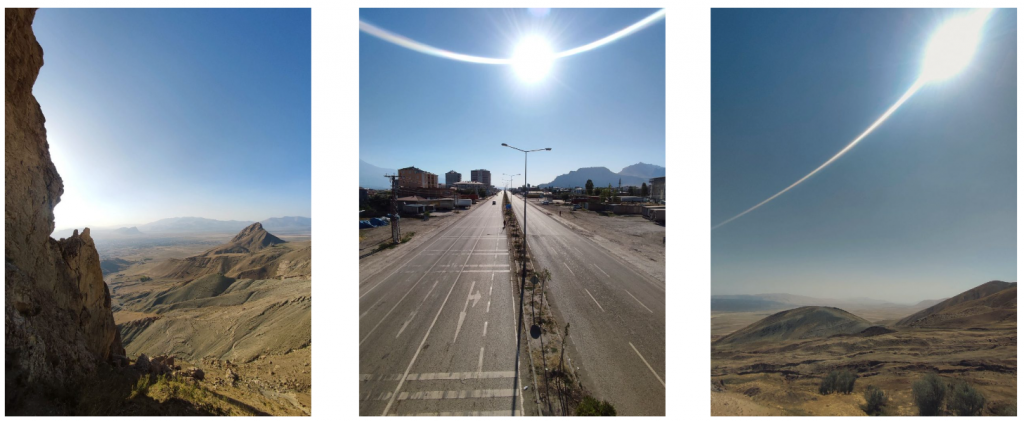
Then, a little before Doğubeyazıt (one of the last big Turkish towns before the Armenian border) Mount Ararat comes into view. It's immense, with its little dome of eternal snow. Right next to it is Little Ararat, a peak some ten kilometers from its big brother, 3,896 meters high and whose southeastern flank lies in Iranian territory. In summer, the latter is completely free of powder. Connected by a lava plateau, the two peaks no longer attract the eye of the locals in the town of Doğubeyazıt, more curious to see us photographing this nearby mountain. This city of just over 100,000 inhabitants, moreover, seems not yet to be taking full advantage of the sports tourism linked to nearby Mount Ararat. More visitors come to admire the yellow and ochre clay enclosures of the superb Ishak Pasa Palace, set on a hilltop a few kilometers east of Doğubeyazıt.
In the town, there's just one store selling hiking equipment, and the few local agency offices offering climbing services are not really well established. Here, it's everyday life that preoccupies the locals. Life isn't always easy in this poor part of Turkey. At traffic lights, children clean windscreens in exchange for a few Turkish pounds. Others, probably fresh from school with their schoolbags on their backs, sell packets of tissues on street corners. In the city center, women are rare. It's the men who take over the terraces of the kebab shops and the many signs selling the famous baklavas, Turkish desserts filled with sugar syrup. On every table, tea is de rigueur and served regularly at all times of the day.
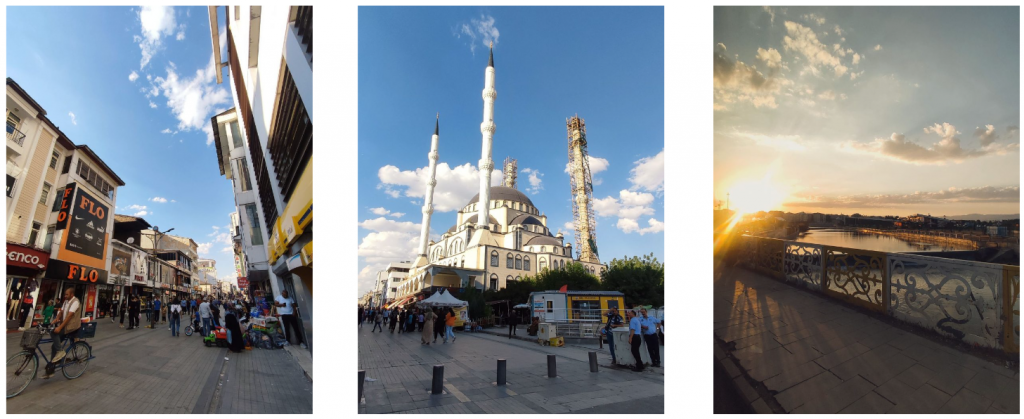
Tensions are also rife in this Kurdish region of Turkey, whether between Ankara and the Kurdistan Workers' Party (PKK) or between Armenia and Turkey/Azerbaijan. There are numerous checkpoints in the region, and Turkish army vehicles are regularly seen on the main roads. These regular clashes have not yet helped tourism to develop. But the Turkish government is hoping to reverse the trend. With this in mind, it has once again authorized the ascent of Mount Ararat since February 2021. The summit is also a magnet for Western tourists, eager for mountains that are easier to climb than those of the Alps and Pyrenees, and eager to add "a 5,000" to their trophy cabinet. Despite its 5,137-metre altitude, Mount Ararat is not technically difficult. "If you're able to walk for several hours over steep gradients, and are patient enough to allow your body to get used to the altitude, there's nothing insurmountable about it," admits Erhan, our Kurdish guide accompanying us that day. "You just have to put on crampons once you've reached the snow on the ice cap at around 5,000 metres to reach the summit. The ascent requires no ropes, the slope is gentle and there are no crevasses. All in all, count on spending at least four to five days on site, depending on weather conditions.
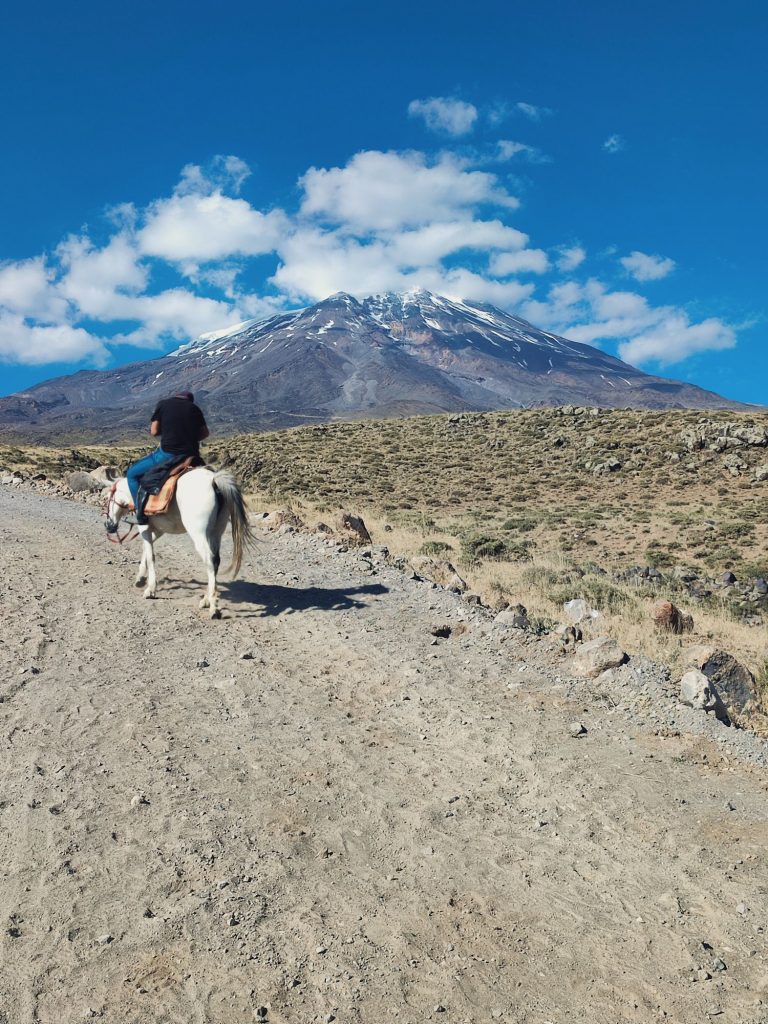
Before reaching the first base camp at an altitude of 3,200 meters, the old-fashioned minibus in which we've taken our seats is having a hard time swallowing the difference in altitude on the 4×4 trail. This path, which we take after leaving the asphalt road a few kilometers after Doğubeyazıt, is strewn with stones and holes. And even though the altitude means we lose a few degrees, it's still hot inside. It's a bad idea to open the windows. The sand and dust kicked up by the vehicle rushed in everywhere. Wearing a choker and a scarf, we wait for the driver's order to get out of the minibus and take a deep breath. The old jalopy was ready to give up the ghost, and we had to let the engine cool down before setting off again. 20 minutes later, another attempt was made, but quickly aborted. The rest is on foot.
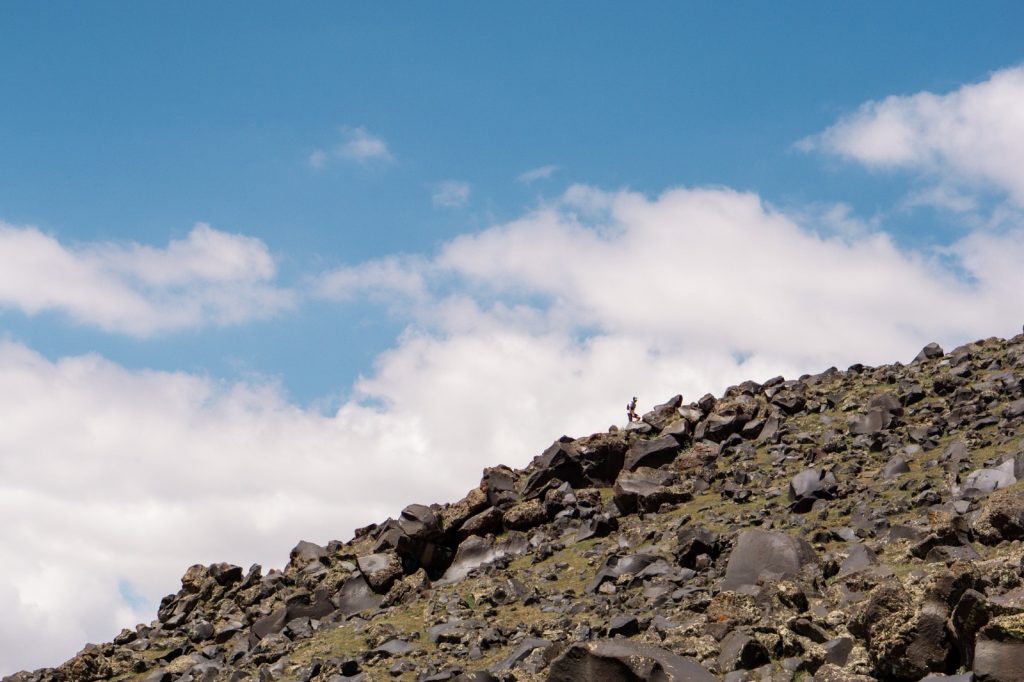
This part of the ascent of Mount Ararat is not the most difficult. On this wide trail, a leisurely walk of around 7 km and 1,000 metres of ascent takes you to Base Camp 1. The route winds its way up the mountain, but it is possible to cut through the twists and turns by taking smaller, much more technical and uneven paths between large rocks. Along the way, you meet men guiding horses and mules to the two base camps. Each animal carries 90 kg of equipment, enough for three candidates for the final climb. At 3,200 metres, we arrive at base camp number 1. On a small plateau, around twenty tents of various sizes are managed by several agencies. While it's obviously possible to plan the climb by booking an all-inclusive trip in advance for around 2,000 euros (excluding air, but including climbing permit, guide, food and transfers on site), locals advise more to do it on the spot via agencies based in Doğubeyazıt. The cost is much lower and the service equivalent as it is provided by the same people.
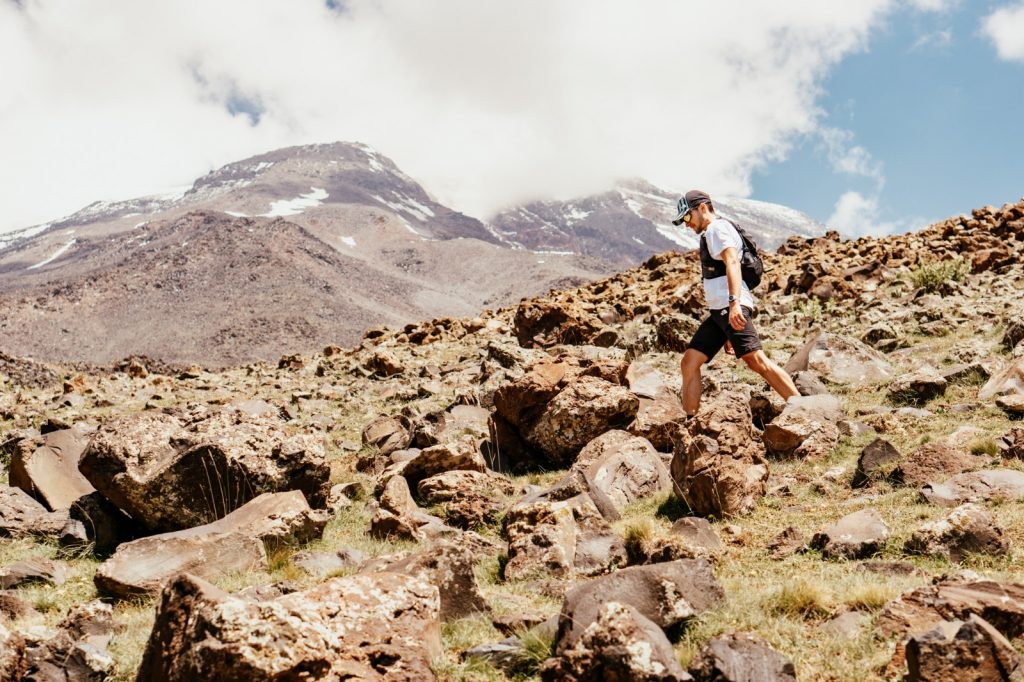
At base camp, dry toilets, cooks' tents and water pipes connected to one of the mountain springs provide the essentials. Garbage is very rare, but this was not always the case, as several guides we met confirmed. An operation orchestrated by the government has resulted in a large-scale clean-up of the two base camps, which until now had been littered with garbage. Yet another example of Turkey's determination to attract more tourists to Mount Ararat. After a quick refuel in one of the camp's large tents, we gaze up at the snow-covered summit, playing hide-and-seek with the clouds. In the next tent, an Iranian guide (a nationality we see a lot of here) explains to me that he's organizing the final ascent for two of his German clients. Clearly, the latter had enjoyed a recent mechoui. A few meters away, a sheepskin on the ground indicates that the animal has recently been butchered.
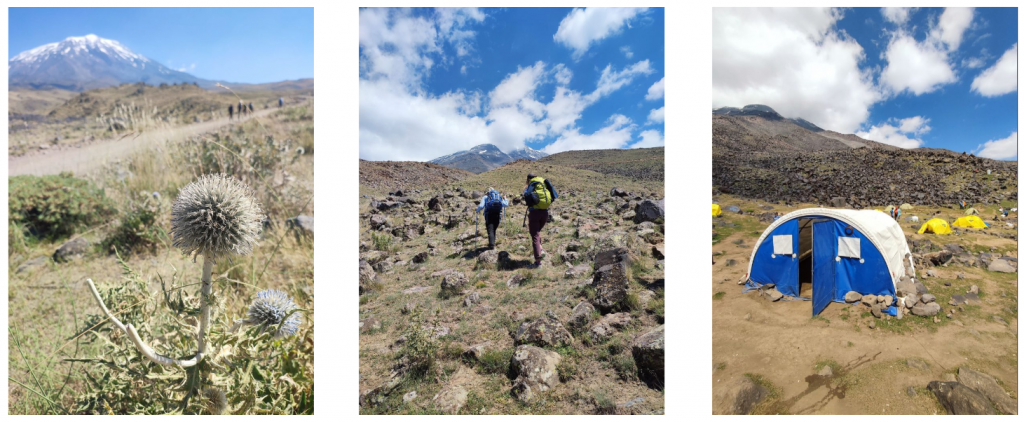
If you look up, you can see two groups of hikers coming down from base camp 2. At least one round trip is necessary before the final ascent, to acclimatize the body to the altitude. "Before the government regulated ascents with permits, everyone did as they pleased," explains the Iranian guide. "You'd see people who arrived on the spot and went straight to the summit. It was a bit of a mess. Nowadays, you have to take a guide and stay on site for 4 or 5 days before you can hope to reach the summit." For our part, the climb will have to wait for another time. Reluctantly, as Turkey's highest mountain is still very much in our sights, and we have a strong desire to push on a little higher.
See this post on Instagram
The return journey takes the same route as the outward journey, the only way to reach Mount Ararat. There's plenty of time to appreciate the importance of this mountain in Christian tradition. Mount Ararat is the place where Noah's Ark is said to have run aground after the Flood. According to the Bible, this ship was built on God's orders to save Noah, his wife, his three sons and their wives. Also on board were seven couples of all the "pure" animals. However, in 1958, a Turkish army captain identified a rock formation near the village of Uzengili, some 20 km from Mount Ararat, which is thought to represent the tracks left by Noah's Ark.
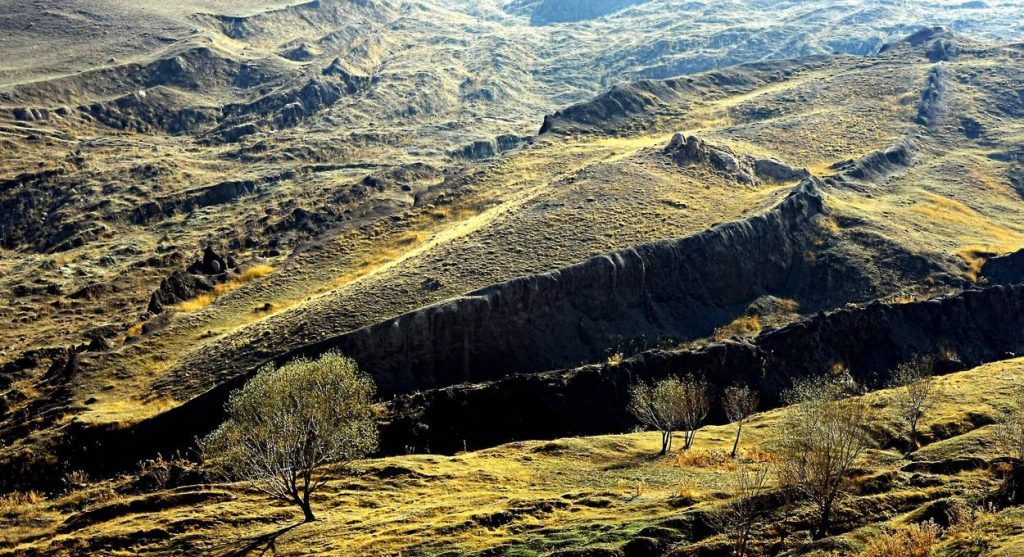
But serious scientific studies on the subject are still limited. Seeing the structure and walking on the very site of what some present as a now sacred place, it's hard to form a definitive idea. If you're coming to Turkey for Mount Ararat, you'll want to focus your efforts on the mountain. With time on your hands, legs and the will to believe, push the expedition all the way to this supposed site of Noah's Ark. And if it's too late to get there, don't worry. As Jesus said: "Blessed is he who has not seen and yet believes".
